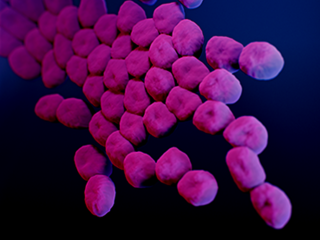Quantitative and Evolutionary Ecology of Communities Group
Members

Doctorante
UCBL

Professeure des universités
VetAgro-Sup
Tel: 33 04 72 43 27 56

Directeur de recherche
CNRS
Tel: 33 04 72 43 27 57

Doctorant
UCBL
Tel: 04 72 44 81 42

Doctorant
CNRS
Tel: 04 72 44 81 42
Doctorant
VetAgro-Sup

Post-doc
CNRS

Maître de conférences
UCBL
Tel: 04 72 44 81 42


Professeur des universités
UCBL
Tel: 33 04 72 43 27 56

Professeur des universités
UCBL

Directeur de recherche
CNRS
Tel: 33 04 72 43 27 56

Maîtresse de conférences
UCBL
Tel: 33 04 72 43 29 02
Maître de conférences
UCBL
Tel: 33 04 72 43 29 02

Our research activities, focused on interspecific interactions (community ecology), aim to better understand the ecological and evolutionary processes structuring species assemblages and biodiversity at different temporal and spatial scales. Our team addresses these major issues using contrasting biological models (communities of large African mammals, insects, microbiota, plants) from 3 complementary angles:
- Our work is strongly anchored in the conceptual framework of evolutionary biology by studying (i) the diversity of adaptive responses implemented by organisms to selective pressures in their environment, (ii) their consequences on population demography and ultimately (iii) the dynamics and composition of species communities.
- Our research is closely linked to societal issues of biodiversity conservation and management by integrating both the functioning of socio-ecological systems and the context of climate change. We conduct experimental studies, manage and ensure the long-term monitoring of several community observation networks.
- Methodological issues also occupy a central place in our team, with the development of new tools for statistical processing and modeling of ecological data. This activity leads to the development of methods and software that we develop and distribute freely.
Research programs

Functioning of African savanna communities
The Hwange LTSER (Long-Term Socio-Ecological Research site in Zimbabwe hosts a long-term interdisciplinary research program that focuses on the functioning of plant and animal communities within the Hwange National Park and the interactions between this protected area and humans living in its periphery. Based on this program, three axes are developed: (1) studying the population dynamics of elephants, exploring their impact and that of management policies on the socio-ecosystem functioning; (2) Understanding the extent to which interactions within and between trophic levels are sensitive to management actions (e.g. sport hunting, water management) and climate change; (3) Decoding human ecology and human-wildlife coexistence mechanisms towards integrated conservation and sustainable functioning of the socio-ecosystem. This research is complemented by more recent works in the Hluhluwe-iMfolozi Park and in the Madikwe reserve in South Africa, which focus on the role of environmental conditions on the hunting success of large African carnivores. We work in close collaboration with the IRL (International Research Lab) Rehabs.
Involved group members : Alice Bernard, Laura Lacomme, Aïssa Morin, Lisa Nicvert, Elie Pedarros, Yolan Richard, Marion Valeix*

Masting and the community dynamics of seed consumers
Masting is a reproductive strategy often encountered in perennial plants, characterized by fructifications highly fluctuating in time and being synchronized at the population level. The seeds produced that way constitute a pulsed resource with a strong impact on the eco-evolutionary dynamics of seed-consuming communities and forest regeneration. Our lack of knowledge of this system still impedes our understanding of the dynamics of temperate forest ecosystems and its future in the context of climate change. Our work carried out on oak forests aims to better understand (i) the proximal causes of masting, (ii) the mechanisms underlying the coexistence of species competing for such highly fluctuating resource and (iii) the co-evolution of consumer exploitation strategies for the fluctuating resource and forest tree fruiting strategies. On the basis of the results obtained, scenarii will be proposed on the future of forest regeneration under climate change, that may serve forest management.
Involved group members : Marie-Claude Bel-Venner*, Emilie Fleurot, Léa Keurinck, Jean Lobry, Samuel Venner

The spread of antibiotic resistance genes in bacteria
Antibiotic resistance is recognized as one of the greatest current threats to human health, and the mobile genetic elements (MGEs) that circulate in bacterial populations and communities are the main vehicles. To understand the dynamics and diversity of MGEs in bacterial pangenomes and the emergence of antibiotic resistance genes, we propose to go beyond the framework of conventional genomics by considering pangenomes as complex ecological communities. In the Ab-One program, we mobilize the concepts and tools developed in community ecology based on an integrative approach (monitoring of bacterial populations/communities evolving in contrasting environments -One-Health approaches-, pan-genomic analyses, experimentation in molecular and cellular microbiology, mathematical modelling). This program is currently focused on the dynamics of MGEs in Acinetobacter baumannii, an antibiotic-resistant microorganism classified as a priority by the WHO. Other more general approaches will illustrate the relevance of this new conceptual framework to understand the dynamics and diversity of MGEs in bacterial pangenomes. This program, co-piloted by our team and a team from CIRI (Horigene) involves the participation of 9 organizations (6 from Lyon -LBBE, CIRI, MMSB, HCL, LEM, VetAgro Sup-, Institut Pasteur (Paris), LMGM (Toulouse ), Robert Koch Institute (Germany)).
Involved group members : Stéphane Dray, Rémi Tuffet, Samuel Venner*

Statistical analysis of ecological data
Understanding the structure and dynamics of species assemblages, and the processes behind them, requires collecting data that are becoming increasingly complex owing to the sophisticated technological developments made available for their acquisition (e.g. GPS, loggers, satellite imagery, molecular data). We are developing new methods for analysing such data, that provide new insights into the ecological processes at work in communities. Multivariate analysis methods allow the analysis of spatial structures, accounting for various information on species (functional traits, morphology, phylogeny), the spatio-temporal variation of species-environment relationships or the multifaceted perception of the protected human-environment relationship. We also model multi-'omics' dose-response data within communities in order to better understand the Adverse Outcome Pathway (AOP) and to better appreciate the risks to the environment. These methodological innovations are made available to the scientific community through the development, distribution and maintenance of software (libraries for the R language: ade4, adegraphics, adephylo, ade4TkGUI, nlstools, fitdistrplus, DRomics, seqinr).
Involved group members: Marie Laure Delignette-Muller, Stéphane Dray*, Jean Lobry, Jean Thioulouse.
Publications
Display of 31 to 60 publications on 660 in total
ade4: Analysis of Ecological Data: Exploratory and Euclidean Methods in Environmental Sciences
Software
see the publicationCommunity ionomics reveals a diversity of mineral nutrition in a species‐rich shrubland on infertile soil
Journal of Vegetation Science . 35 ( 5 ) : e13301
DOI: 10.1111/jvs.13301
Journal article
see the publicationWhy incorporate plant architecture into trait-based ecology?
Trends in Ecology & Evolution . 39 ( 6 ) : 524-536
Journal article
see the publicationMapping global orchid assemblages with deep learning provides novel conservation insights
Ecological Informatics . 81 : 102627
Journal article
see the publicationNew Automatic Identification Tools: An Aid for Botanists and Nature Managers ?
Linking with Nature in the Digital Age: Volume 1 - Communication, Environment, Science and Society SET . 9781786308580 ( 1 ) : 161-175
Book chapter
see the publicationRefocusing the microbial rare biosphere concept through a functional lens
Trends in Ecology & Evolution .
Journal article
see the publicationThe three‐species problem: Incorporating competitive asymmetry and intransitivity in modern coexistence theory
Ecology Letters . 27
DOI: 10.1111/ele.14426
Journal article
see the publicationInsights on the effect of mega-carcass abundance on the population dynamics of a facultative scavenger predator and its prey
Peer Community Journal . 4 : e53
Journal article
see the publicationDeep dive into the chronic toxicity of tyre particle mixtures and their leachates
Journal of Hazardous Materials . 466 : 133580
Journal article
see the publicationModeling HepaRG metabolome responses to pyrrolizidine alkaloid exposure for insight into points of departure and modes of action
Journal of Hazardous Materials . 474 : 134721
Journal article
see the publicationDevelopment, feeding, and sex shape the relative quantity of the nutritional obligatory symbiont Wolbachia in bed bugs
Frontiers in Microbiology . 15 : 1386458
Journal article
see the publicationCoxiella burnetii within-and between-herd true seroprevalence assessment in domestic ruminants in France accounting for diagnostic uncertainty with latent class
SBED Conference 2024: Insights in Action .
Poster
see the publicationHarmonisation of the diagnostic performances of ELISA tests for C. burnetii antibodies in ruminants: optimal positivity thresholds and performance reassessment
SBED Conference 2024: Insights in Action .
Poster
see the publicationEvaluation using latent class models of the diagnostic performances of three ELISA tests commercialized for the serological diagnosis of Coxiella burnetii infection in domestic ruminants.
SBED Conference 2024: Insights in Action .
Conference paper
see the publicationUsing the multivariate Hawkes process to study interactions between multiple species from camera trap data
Ecology . 105 ( 4 ) : e4237
DOI: 10.1002/ecy.4237
Journal article
see the publicationRésistance à la colistine chez le porc - des mesures de maîtrise efficaces
56. Journées de la Recherche Porcine . 56 : 81-82
Conference paper
see the publicationProjections climatiques CMIP6 à l’échelle du sud-ouest de la Côte d’Ivoire : évolution des contraintes thermo-pluviométriques pour les principaux agrosystèmes associant cacao, hévéa, palmier à huile et manioc
Climat, eau et société : changements et défis . : 189-195
Conference paper
see the publicationObject-based characterization of vegetation heterogeneity with sentinel images proves efficient in a highly human-influenced National Park of Côte d’Ivoire
Environmental Monitoring and Assessment . 195 ( 1 ) : 200
Journal article
see the publicationThe functional trait distinctiveness of plant species is scale dependent
Ecography . 2023 ( 1 ) : e06504
DOI: 10.1111/ecog.06504
Journal article
see the publicationSynergizing Digital, Biological, and Participatory Sciences for Global Plant Species Identification: Enabling access to a worldwide identification service
Biodiversity Information Science and Standards . 7 : e112545
Journal article
see the publicationThe ecological causes of functional distinctiveness in communities
Ecology Letters . 26 ( 8 ) : 1452-1465
DOI: 10.1111/ele.14265
Journal article
see the publicationAvoid, tolerate, or escape? Native vegetation responses to invasion vary between functional groups
Biological Invasions . 25 ( 5 ) : 1387-1401
Journal article
see the publicationLinks to rare climates do not translate into distinct traits for island endemics
Ecology Letters . 26 ( 4 ) : 504-515
DOI: 10.1111/ele.14169
Journal article
see the publicationRevisiting extinction debt through the lens of multitrophic networks and meta‐ecosystems
Oikos . 2023 ( 3 ) : e09435
DOI: 10.1111/oik.09435
Journal article
see the publicationDissecting fine root diameter distribution at the community level captures root morphological diversity
Oikos . 2023 ( 1 )
DOI: 10.1111/oik.08907
Journal article
see the publicationConnecting local and regional scales with stochastic metacommunity models: Competition, ecological drift, and dispersal
Ecological monographs . 93 ( 4 )
DOI: 10.1002/ecm.1591
Journal article
see the publicationA Theoretical Framework for Trait-Based Eco-Evolutionary Dynamics: Population Structure, Intraspecific Variation, and Community Assembly
The American Naturalist . 201 ( 4 ) : 501-522
DOI: 10.1086/723406
Journal article
see the publication
You also, comment on this article